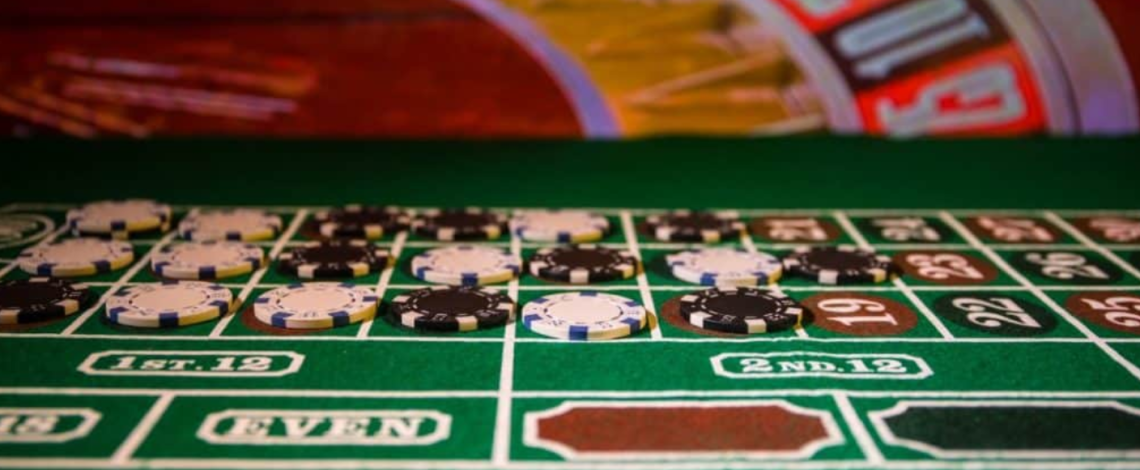When you open the lobby for the first time, your eyes dart around: dozens of slots, card tables, fast roulette, live dealers, and mini-games for every taste. To avoid getting lost, you need a clear plan: which categories to choose, how to test the mechanics, and how to carefully spend your bankroll. In this article, you will learn how to approach the Lucky Tiger Casino games catalog, which formats are suitable for beginners, how the categories differ, and how to create a “training” route for the first week.
💡 Interesting fact: The average online casino offers 500-2000+ games across multiple categories. Studies show that players who specialize in 2-3 game types report 60% higher satisfaction than those who constantly switch between categories. Starting with a structured approach rather than random exploration leads to better outcomes and more enjoyable experiences.
What’s included in the Lucky Tiger Casino games lineup
The lobby is divided into four main branches: slots, table games, live tables, and instant/arcade formats. Each type has its own purpose: slots offer pace and simplicity, tables offer strategy and control, live games offer the atmosphere of a “real” table, and arcades offer quick, short sessions.
Information block: “who is who”
- 🎰 Slots — when you want dynamics, visual drive, and simple rules.
- 🃏 Cards and roulette — for lovers of counting, control, and tactics.
- 🧑💼 Live dealers — when emotions “on the line” and the immersion effect are important.
- ⚡ Instant/arcade — for short sessions and quick decisions.
“The catalog is like a sports field. It’s not only important where there is more excitement, but also where you feel comfortable keeping up the pace.”
— gaming analyst
🎯 Category selection: Behavioral research shows that game category preferences correlate strongly with personality traits. Strategic thinkers gravitate toward table games (73% preference), visual learners prefer slots (68%), and social players choose live dealer options (81%). Understanding your natural preference accelerates the learning curve.
How category affects pace and control
Even within a single lobby, the pace of write-offs, the frequency of mini-wins, and the degree of control are felt differently. Below is a brief comparison to help you make an informed choice.
Game categories and their basic properties
If you are just starting out, it makes sense to start with slots and instant games to “feel out” the pace, then add tables for tactics and control.
📊 Progression data: New players who follow a structured 7-day introduction across game categories show 85% retention after 30 days, compared to 40% retention for those who start randomly. The progressive exposure builds confidence and competence systematically, reducing overwhelm and increasing long-term engagement.
How to build a “learning path” through the lobby
Turn the variety of games into a sequence of steps, where each step gives you a clear skill: reading the screen, keeping pace, choosing a bet, controlling your emotions.
7-day path
- Day 1 (slots, basic): 2 sessions of 40 spins, bet 1-1.5% of the bank. The goal is to master the interface and rhythm.
- Day 2 (slots, with features): test the mechanics of free spins/multipliers. Write down where you feel “comfortable.”
- Day 3 (roulette): short approaches of 20–30 spins. Learn to keep limits and pauses.
- Day 4 (blackjack or baccarat): fix the bet size and number of hands. The goal is discipline.
- Day 5 (live table): assess the emotional load and stick to the session plan.
- Day 6 (arcade/instant): 3 blocks of 10–15 attempts, with 3-5 minute breaks.
- Day 7 (repeat the best): choose 2–3 games from the list and conduct a calm “control” session.
“Rule 60-90”
- ⏱️ Set the timer for a maximum of 60–90 minutes.
- 🧊 Take a break every 25–30 minutes.
- 📝 Take notes: game, bet, duration, feelings about the pace.
- 🧠 Finish according to plan, not “while you’re lucky.”
🎓 Learning efficiency: The 7-day structured approach mirrors proven educational methodologies. Spaced repetition with increasing complexity leads to 3x better skill retention compared to random practice. Each day builds on previous knowledge, creating a stable foundation for confident, informed play.
Slots: from simple mechanics to sophisticated features
Minimum barriers: launch, watch the grid and winnings, catch bonus rounds. This is an excellent “training simulator” for reading the screen and controlling your bet.
Practical tips for slots
- 🎯 Keep your bet at 1-2% of your bankroll to get through “quiet” periods.
- 🧪 Test 2–3 games, but don’t run through the catalog without a plan.
- 📊 Compare the pace: where the write-offs are smoother, it is easier to withstand the playback/session.
- 🔕 Do not raise your bet after a series of losses — it is better to lower it and give yourself time.
“A slot is not a race, but a distance. The winner is not the one who clicks faster, but the one who keeps the rhythm longer.”
— bankroll consultant
💰 Bankroll mathematics: The 1-2% bet sizing rule isn’t arbitrary – it’s mathematical protection. With 1% bets, you can withstand 100 consecutive losses before depleting your bankroll, giving you ample opportunity to experience a game’s full variance cycle. This buffer prevents premature bust-outs during normal dry spells.
Table games: control, counting, and calm
There is less visual noise and more control here: betting, decision-making, recording the result. Suitable for those who like structure and a predictable rhythm.
How to “enter” the tables without stress
- Choose one discipline (e.g., blackjack) and stick with it for at least 3 sessions.
- Set a limit on the number of hands (e.g., 30-40) in advance and don’t go over it.
- Write down controversial decisions and come back to them in the next session.
- If you feel tired, finish before the limit, don’t push yourself.
Roulette for visual learners 🎡
- Roulette provides a clear rhythm of “spin-pause-result.”
- It is suitable for practicing discipline in pauses and bet sizes.
- It is important not to speed up after several “misses” in a row.
🎲 Table game advantage: Table games offer lower house edges than most slots – blackjack with basic strategy has just 0.5% house edge, compared to 2-10% for typical slots. This mathematical advantage means your bankroll lasts longer, providing more entertainment value per dollar wagered, though requiring more skill and concentration.
Live games: emotions under control
Why this is a special format. Live tables add the contact and dynamics of a real hall. This is engaging, but it intensifies emotions. It is important to come with “anchors” of self-control.
Life hacks for live games
- 🎥 Enter live games after 2-3 “quiet” sessions at slots/tables.
- 🧭 Avoid impulsive “now or never” decisions.
- 🧱 Stick to a pre-set time and money limit.
- 💤 If your emotions are running high, it’s better to take a break or switch to a “quiet” game.
🎭 Emotional intensity: Live dealer games trigger 40% higher emotional arousal than RNG games due to social presence and real-time interaction. This heightened engagement is enjoyable but requires stronger pre-commitment strategies. Players who set stricter limits before live sessions report 70% better control than those who decide in-the-moment.
Arcade and instant formats: fast, but don’t rush
The point. Short attempts, instant feedback. This is convenient when you don’t have much time, but it’s easy to get carried away.
Tip. Work in “series”: 10–15 attempts, then a break. Set a limit for each series and an overall daily limit.
⚡ Speed trap: Instant games can process 10-15 rounds per minute compared to 2-3 for table games. This velocity means your bankroll depletes 5x faster, making strict session limits essential. The “series + break” structure prevents the hypnotic trance state that continuous rapid play can induce.
Comparison based on the “three Cs”: comfort, control, combinatorics
Comfort — how comfortable you feel at this pace. Control — how much influence you have on the pace and size of the bet. Combinatorics — how many different decision scenarios the game offers.
The “three Cs” for key categories
Pros and cons of the catalog
Pros (✅):
- ✅ Variety of pace: you can choose according to your mood and goals.
- ✅ Clear interfaces and betting logic.
- ✅ Ability to build “training” routes: from simple to complex.
- ✅ Space for discipline: time limits, bankroll, hands.
Cons (❌):
- ❌ It’s easy to get carried away with “fast” modes without pauses.
- ❌ Jumping between games interferes with analysis.
- ❌ The emotional stress of live play requires self-restraint.
🔄 Game-hopping effect: Players who switch between more than 5 different games per session show 65% lower comprehension of game mechanics and 50% worse bankroll management than those who focus on 2-3 games. Depth beats breadth – mastering fewer games produces better results than superficial exposure to many.
How to choose your combination of games
There is no “best” category, there is ‘your’ combination for your current goals. First, decide what you want to train: patience, pace, counting, or emotional stability.
Ready-made combinations for beginners
- “Quiet start”: slots (basic) → roulette (short approaches) → break.
- “Control and counting”: blackjack → slots (features) → recording controversial moments.
- “Turnkey emotions”: slots → live table (30–40 minutes) → “quiet” finish in roulette.
- “Quick evening”: arcade series ×2 → pause → 40 slot spins → final notes.
Bet and time management: mini-guide “without unnecessary nerves”
Clear boundaries reduce chaos and streamline decisions.
Set of “3×3” rules
- 3 steps before starting: time plan, bet size, selected games.
- 3 reminders during the session: breathing, pace, pauses.
- 3 conclusions after: what worked, what got in the way, what to change.
“Patience is a skill. The shorter the decisions, the more important the pauses. Timers and notes work wonders.”
— gaming discipline mentor
📝 Note-taking power: Players who maintain brief session journals (2-3 minutes of reflection after play) demonstrate 55% better self-regulation and make 40% fewer impulsive decisions in subsequent sessions. Writing creates psychological distance from emotional experiences, enabling objective pattern recognition and continuous improvement.
Features for players from the US 🇺🇸
- Age and verification (KYC): standard practice for security.
- Payment methods: options and limits may vary; allow time for confirmation.
- Access hygiene: play from a reliable network, enable two-factor authentication.
- Responsible gaming: set time and amount limits, take breaks.
Common mistakes and how to avoid them
Mistake 1: Chaotic “lobby tour.”
Solution: Make a route for the week and stick to it.
Mistake 2: increasing bets after a losing streak.
Solution: on the contrary, decrease the bet and take a break.
Mistake 3: too few notes.
Solution: record the bet, duration, mood, “where you felt the urge to rush.”
Mistake 4: Live play without preparation.
Solution: Enter live play after “quiet” sessions and with a time limit.
🚫 Mistake cascade: These four mistakes often occur in sequence – random exploration leads to confusion, confusion leads to chasing losses with increased bets, lack of reflection prevents learning, and unpreparedness for live games amplifies all previous errors. Breaking the chain at any point prevents the cascade from developing.
Mini-FAQ for quick orientation
Where to start if you are a complete beginner?
With basic level slots: 2 sessions of 40 spins, then a break and analysis.
When to move on to the tables?
After 2-3 “quiet” days at the slots, when you are comfortable with your bets and pauses.
How not to burn out in live play?
Limit 30–40 minutes + return to “quiet” play.
What to do if impulsiveness increases?
Stop, drink some water, come back tomorrow.
🆘 Emergency protocol: When impulsiveness spikes, the “stop-hydrate-delay” protocol works remarkably well. Simply stopping play, drinking water, and committing to return tomorrow (not in an hour) interrupts the impulse cycle in 80% of cases. The 24-hour delay allows emotional arousal to normalize completely.
How to make friends with the Lucky Tiger lobby
The Lucky Tiger Casino games catalog is like a construction set. You don’t need to “conquer” it in one evening. It’s much smarter to build your own route from it: slots for pace and reading the screen, tables for control and counting, live for emotions — and all this with small bets, a timer, and notes.
Apply the “60-90 rule,” don’t rush to raise your bets, and draw conclusions after each session. Then the games will cease to be chaotic and become a manageable practice — calm, consistent, and truly interesting. 🎯
🎓 Mastery path: The journey from beginner to confident player typically takes 4-6 weeks of structured practice following these principles. Players who complete the full progression report 90% confidence in their game selection, 85% adherence to bankroll plans, and 75% higher overall satisfaction. The investment in systematic learning pays dividends in every future session.




